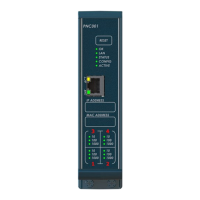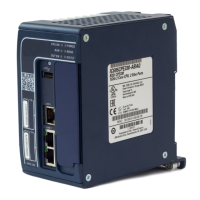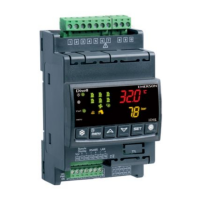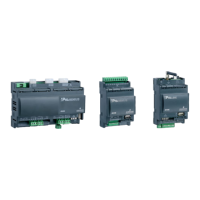GFK-2738AE Jan 2024
9
Connecting the PNS to the PROFINET network and a
10BaseT, 100BaseTX, or 1000BaseT IEEE 802.3 network
for general Ethernet communications
Each port on an RX3i PNS module (Figure 3) operates independently, so devices that operate at different speeds
and/or duplex modes may be attached to the ports. By default, all ports, including empty, unconfigured SFP
cages, are set for Automatic, which enables auto-negotiation for the widest range of options supported by the
port. For other options, refer to PACSystems RX3i PROFINET Scanner Manual, GFK-2737.
Figure 3: Anatomy of the Module
•
CAUTION
Do not connect two or more ports on the PNS to the same device, either directly or indirectly.
1. Installing SFP devices
•
WARNING
Optical SFPs use an invisible laser to generate a fiber-optic signal. Always keep the port covered if a cable is not installed. Do
not look into the open port if a cable is not installed.
•
WARNING
If the surrounding air operating temperature of the PNS is greater than 40 °C, SFP devices could have operating temperatures
over 70°C (158 °F). Under these conditions, for your safety, do
not
use bare hands to remove an SFP device from the SFP
cage. Use protective gloves or a tool (needle-nose pliers) to avoid handling the hot SFP device directly when removing the
SFP device.
For a list of SFP module types and network cabling details, refer to the section entitled SFP Modules for
Ethernet Ports in PACSystems RX3i PROFINET Scanner Manual, GFK-2737.

